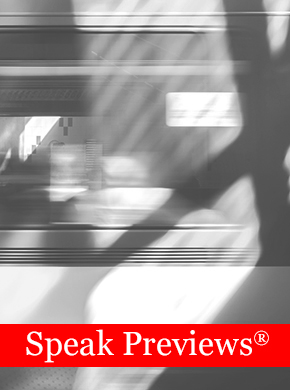Presenters sometimes abhor silence, believing that every moment not spent speaking to their messages is a moment lost. Or they fear that silence will suggest that they have lost their next thought, that they are casting about for what to say next. But silence can powerfully shape content and guide delivery in a presentation.
In presenting, say our consultants, silence is your friend. It's a companion to speech, one that provides eloquent assistance in and support to the making of meaning.
Together, speech and silence produce cadence or rhythm in vocalizations. While the inflection of words or modulation of your voice help establish a rhythmic flow when you speak, it is the length of pauses that sets its beat or pattern of movement, its tempo, its pace. Too few pauses may give your presentation the cadence of an express train zipping through the countryside, too many an amble through a rose garden. Create a pattern of sound and silence appropriate to your message and audience.
Silence need not be a long pause; a slight elongation of breath varies the tempo and heightens awareness of the very next thing to be said.
Use pauses as you would punctuation in a sentence, a small silence for a comma, for example, or the larger silence of a period or full stop. In a document, these marks indicate which parts of a sentence go with other parts, which thoughts and ideas should be taken together, which should be separated. But in a presentation your delivery must make the groupings clear; insert a tiny pause in places where punctuation would appear in written communication.
An extra beat or two of silence calls attention to itself and to you, so use it to prepare listeners for a change in topic, tone, or approach. Silence is useful just before you put up a slide because it signals audience members that something different is on the way; it's useful after because it gives them time to orient themselves to the slide before you begin speaking again.
Used effectively, silence helps you influence and direct your audience's listening. But there are some rhetorical situations in which silence is even more important. When you're presenting extraordinarily complicated content, you may need to pause more often to give listeners time to make meaning. The same may be true when your subject expertise is greater than that of the audience. And when you and listeners have different first languages, well-timed silences can right the imbalance often caused by unfamiliarity with vocabulary, speech patterns, or pronunciation.
Remaining silent for a moment or two after you've been asked a question gives you time to think, to understand the question and to begin to formulate your response.
Silence is a good friend, a sturdy, golden one that stretches its hand out to you. Take it.



